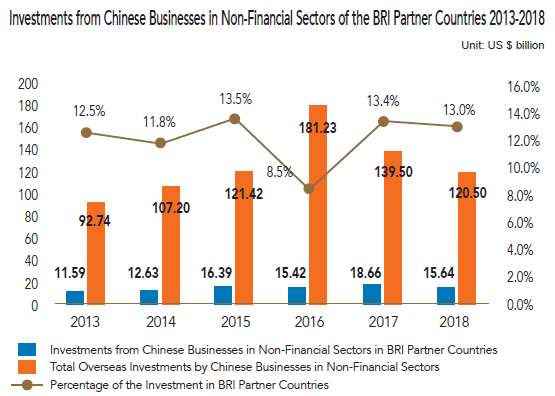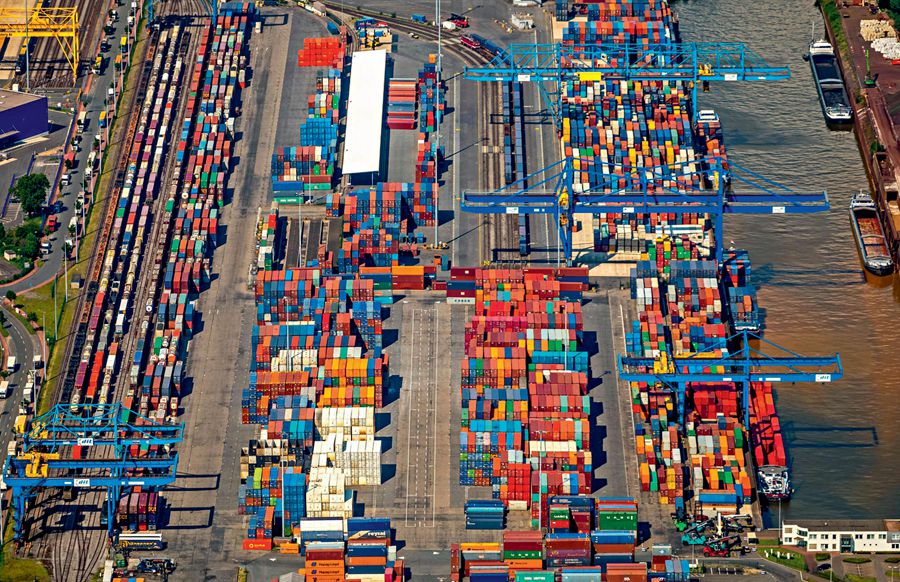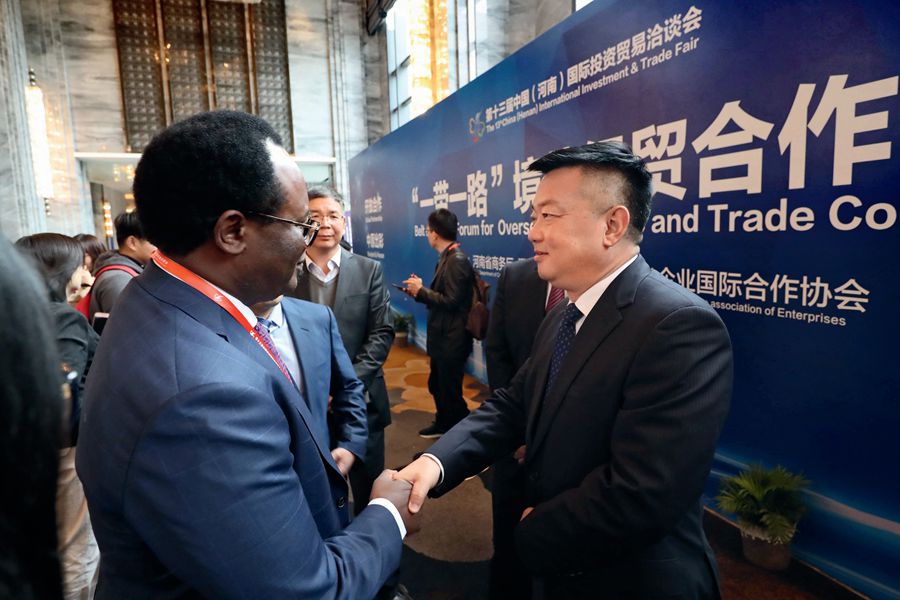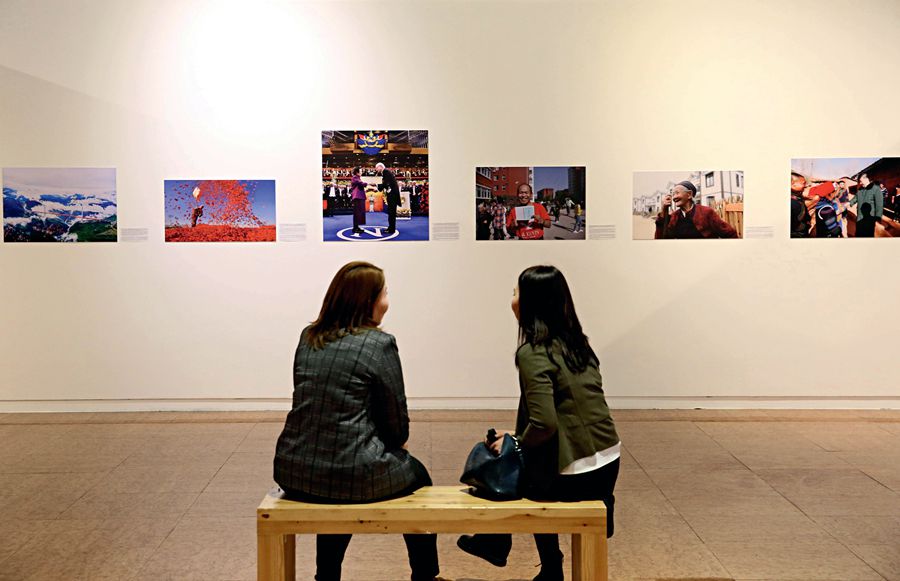SINCE the Belt and Road Initiative (BRI) was first proposed nearly six years ago, it has been well received globally. So far, 126 countries and 29 international organizations have signed agreements with China for joint construction. Meanwhile, the critics against the BRI among certain media outlets, think tanks, and nongovernmental organizations in some countries have also increased, voicing pessimism and misgivings about it. With debt trap and geopolitical strategy accusations, they exploit sensitive issues among the public in BRI countries concerning sovereignty, energy, and resources to smear the program. As the BRI has brought tangible benefits to the countries involved and their citizens, it becomes clear to increasingly more people worldwide that the BRI creates a path leading to wellbeing instead of a trap of debts, and is an opportunity for common development instead of a geopolitical tool.
Driving Global Economic Growth
Catering to the demand for reforming the global governance system, the BRI adopts a more open and inclusive mode of international economic cooperation, blazes a new trail for improving global governance mechanisms, and gives impetus to global economic growth.

Since the launch of the program, the flow of goods between China and other BRI countries has steadily increased. The opening of China-Europe express freight train service, the growth of e-commerce, and the success of the first China International Import Expo (CIIE) have all further released the potential of trade among BRI countries. During the 2013-2018 period, the amount of trade in goods between China and its BRI partners grew from US $1.04 trillion to US $1.27 trillion, and its share in the total value of China’s foreign trade climbed from 25 percent to 27.4 percent.
Vietnam and Egypt are two typical examples. The UN’s statistics show that from 2013 to 2017, Vietnam’s commodity exports to China registered an average annual growth of 28 percent, more than doubling its overall yearly export growth (13 percent). In the case of Egypt, its sales to China increased at an annual rate of 5 percent, bucking the trend of negative growth in its overall exports during the period. As a result, China’s contribution to the two countries’ foreign trade expanded by 6.5 percent and 0.7 percent respectively. During the same period, Vietnam’s annual GDP growth was 6.5 percent on average, and per capita GDP enjoyed a growth of US $341. In Egypt, the GDP grew at an annual rate of 4 percent, and per capita GDP rose by US $194. All these indicators are well above the levels they were before participating the BRI, pointing to solid improvements in local people’s livelihood.

Growing trade brought about by the BRI has weaned Germany’s Ruhr region off the polluting mining industry.
The BRI provides public goods essential to global economic development. For instance, the Asian Infrastructure Investment Bank (AIIB), the Silk Road Fund, and the Assistance Fund for South-South Cooperation have given relevant countries and regions financial support for development. So far the AIIB has 93 members, and has approved investments of over US $7.5 billion; the Silk Road Fund has signed off 28 projects with the promised investment totaling US $11 billion. In addition, the BRI has attracted the participation of countries and input of more resources into the development of public goods through third-party cooperation, increasing the supply of public goods across or between relevant regions.
Meanwhile, China gives proposals and has been sharing its experience on multiple global and regional issues in the course of building the Belt and Road. In the field of UN peacekeeping, China contributes the largest number of peacekeepers among the five permanent members of the UN Security Council, and is the second largest funder of UN peacekeeping missions. In the field of poverty reduction, China launched cooperation with African and East Asian countries, teams up with international organizations on various aid programs through the Assistance Fund for South-South Cooperation, and is working toward the accomplishment of the 2030 Agenda for Sustainable Development. In the field of humanitarian aid, China is an active participant in missions of the UN, WHO, and other international organizations, and sends disaster relief teams to offer emergency services. Through these efforts, China joins hands with other countries and peoples to build a community with a shared future for mankind. Since 2006, China has cooperated with international organizations on hundreds of aid programs via the Assistance Fund for South-South Cooperation, which have benefitted tens of millions of people.
Promoting Common Prosperity
Development holds the key to solving problems facing various countries. Over the past six years, China has actively cooperated with other countries on infrastructure, energy, resources, and industry to unleash the development potentials of all parties involved, and blazed a trail toward common prosperity.
Infrastructure connectivity is a priority of the BRI. The infrastructure projects undertaken by China have significantly improved the transportation, energy supply capacities, and IT developments in host countries, hence facilitating local development. The Doraleh Multi-Purpose Port, jointly built by China and Djibouti, has a designed annual handling capacity of 7.08 million tons of bulk cargo and 200,000 standard containers, and can accommodate 100,000-ton vessels. It also has remarkably increased the port work efficiency in the region. For instance, the loading/unloading rate for a five-ton grain ship soared from 2,800 tons to 10,000 tons per day. Such improvements have laid the foundation for Djibouti to become a new entrepot in the Gulf of Aden in the future.

Two participants talking during the Belt and Road Forum for Overseas Economic and Trade Cooperation convened in Zhengzhou, Henan Province, on April 9, 2019.
In Cambodia, the Sesan II hydropower dam, the largest in Asia, started operating last year. The electricity it generates will exceed one fifth of the country’s total installed capacity. The Emergency Support Mechanism for International Users of Fengyun Meteorological Satellites in Disaster Prevention and Mitigation released by China in April 2018 has given Vietnam and the Philippines effective support in their coping with such super typhoons as Mangkhu and Yutu.
Investment is another key element of BRI cooperation. During the 2013-2018 period, Chinese businesses invested more than US $90 billion in nonfinancial sectors of BRI partner countries, with the annual growth at 6.2 percent. They also built 82 trade and economic cooperation zones in 24 BRI partner countries, with the accumulative investment exceeding US $36.48 billion. Now these zones are home to more than 4,000 enterprises, have paid nearly US $2.4 billion in taxes to the countries where they are located, and created 265,000 jobs for local residents. China’s outbound investment is a key driver of global FDI growth.
Industrial cooperation between China and relevant countries, covering sectors such as electrical home appliances, textile, chemistry, automobile, and new materials, fills the vacuums in certain areas, promotes development along the industrial chain, and advances industrialization in these countries. Belarus for instance could only manufacture trucks and agricultural vehicles before the opening of a passenger automobile plant jointly established by the Chinese company Geely and a local partner. President Lukashenko lauded the plant for closing a gap in the country’s passenger vehicle industry. In Russia, an agricultural cooperation program has invested in 68,000 hectares of farmlands in 23 villages, and set up nine agricultural parks and 14 plantations where the mechanization rate reaches 100 percent. In Peru, a Chinese-funded tailings recycling project retrieves copper, zinc, iron, and other metals from mine dumps. The first of its kind in the country, it not only turns waste into assets, but also protects the environment.

A photo exhibition about China’s reform and opening-up and the joint efforts of China and Kazakhstan to build the Belt and Road opens in Kazakhstan on April 10, 2019.
The BRI projects also contribute to employment and technical and managerial improvement in countries involved. The Mombasa-Nairobi Railway, for instance, has created more than 46,000 jobs in Kenya. By the end of 2017, its local operator was employing 1,348 Kenyans, who accounted for 72 percent of its staff. The proportion of local employees is expected to increase year by year and eventually reach 90 percent by 2027. In Uganda, four young Chinese founded the Sunmaker Oil & Gas Training Institute. All its welding major graduates have received internationally recognized certificates, and landed well-paid jobs, earning more than double the average sum for local welders. One of them, Julius, won the first prize in the national welding competition and the second place in an Africa-wide vocational skill contest. Two other graduates, Nickoishizzo and Sam, established their own welding businesses in their hometowns, and both of them hired several local workers.
Opening a Green Path
China puts great emphasis on environmental protection, and promotes the concept of low-carbon, green development during the implementation of BRI projects.
Chinese enterprises engaged in the BRI adopt green technology. In South Africa, for instance, the China-invested Mamba cement plant employs advanced technology for waste water treatment and waste heat power generation. This as a result cuts power consumption by 40 percent and brings unit power consumption way below the average industry level in the country. In Ethiopia, the China-Ethiopia Leather Industry Joint Laboratory adopts four technologies over which the Chinese side owns intellectual property rights. Among them, the technology for recycling chrome tanning waste slashes the discharge of heavy metals by 99 percent and the use of chrome tanning agent by 25 percent, and consequently saves RMB 20 million every year. Reducing both pollution and cost, this technology is the first of its kind to be applied in Ethiopia and the African continent at large.
Chinese investors also pay particular attention to wild life protection. The Mombasa-Nairobi Railway traverses the Tsavo National Park, the largest wildlife reserve in Kenya. To protect wild animals, the Chinese builders designed 14 animal passages, 600 culverts, and 61 bridges along the line to allow unimpeded migration of larger animals like giraffes. To minimize the disruption to wild animals, they halted construction at dusk, installed sound insulation devices, and prohibited honking. In addition to this, they put in place an emergency plan to rescue trapped animals.
China also helps other countries to improve their capacities to prevent and respond to disasters. So far it has built meteorological aid projects in Zimbabwe, Kenya and other five countries, including 42 automated weather stations and 100 sets of weather observing systems. Over 90 Chinese meteorologists have been sent to Africa, and trained 720 African scientists. These efforts have helped African countries to significantly enhance their capacity to prevent meteorological disasters, reduce the possible losses inflicted thereof, and cope with climate change. China has also assisted Bangladesh in the latter’s formulation of flood prevention plan, construction of flood control works, and development of non-engineering mitigation measures, in order that the country can improve its management of water resources and its ability to prevent and handle floods.
Almost six years after it was initiated, the BRI has come to a new level. In the coming years, efforts will be focused more on higher-quality development, and on building cohesion and reaching a wider consensus so as to deliver more benefits to more countries and peoples.
GU XUEMING is president of the Chinese Academy of International Trade and Economic Cooperation.



